Graptolites
Following are graptolites collected from the Athens Shale formation
(Ordovician age) near Montevalo, Alabama. The Athens shale tends to be a nice
formation for collecting graptolites, as the dark carbonized remains of the
graptolite contrast sharply with the tan to cream colored shale. In fact, it
seems that the presence of graptolites in the shale influenced the coloration,
as there are darker colored shales near to the light colored ones, but the
graptolites are often surrounded by a "halo" of lighter color even in
the darkest of shales.
Graptolites (literally translated "writing on rock") are an
extinct group of Paleozoic colonial organisms, most often found as thin
carbonized films in various shales or limestones from the Cambrian to the
Carboniferous. It is believed that they were either planktonic (floating) or
benthonic (bottom dwelling) in habit. They are classified in the hemichordates
due to their affinity to a modern group of hemichordates, the pterobranchs, and
it is believed that they were filter-feeders as are their modern counterparts.
An entire graptolite colony is termed a rhabdosome, composed of a
variable number of stipes diverging from the initial individual of the
colony, the sicula. The small "sawtooth" like structures along
the stipes are termed thecae (singular theca)--it is the thecae
that housed the individual members of the graptolite colony. In some genera of
graptolites, the individual stipes are strung together by a whip-like structure
called the nema.
Click a thumbnail to get a large picture
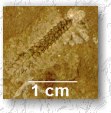
| Retiograptus geinitzianus.
These have a somewhat unique appearance, seeming to be made of numerous
hexagonal "bubbles" strung together. |
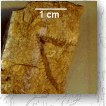
| Isograptus lyra .
One of several collected there. Isograptus has two very thick stipes
with small whip-like projections by each theca. All in all, I find these to be
very attractive graptolites. |

| Diplograptus (Orthograptus)
calcaratus. These are very common in the Athens Shale, second only to
Climacograptus in abundance. The stipe has thecae running down both
sides (termed biserial).
|
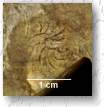
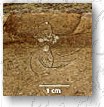

Nemagraptus gracilis. Nemagraptus
illustrates a graptolite that ties together numerous stipes with a nema, hence
its name. The images are arranged in ascending order by size from left to right.
The first two represent the typical size of Nemagraptus specimens
collected in the area with 8-12 stipes along a very small nema with the entire
rhabdosome measuring some 1-2 cm across. The largest of the three (the one to
the right) is a very large specimen, measuring some 4 inches across from "corner
to corner", with around 35 stipes each about 2 inches long. It is certainly
the largest I have ever collected, and appears to be larger than any I have seen
illustrated in graptolite literature. At the top of the piece of shale with the
large Nemagraptus, close to the measurement mark is a Dicellograptus sp.
Mastigograptus sp.
This graptolite illustrates a branching form. | 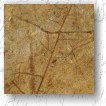
|
Climacograptus parvus.
There are several specimens of Climacograptus (graptolites with squarish thecae)
along with another specimen of Diplograptus calcaratus (graptolite with
triangular thecae). | 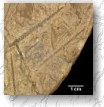
|
Glossograptus
(hystrix?). Perhaps my personal favorite graptolite (probably owing to
their relative rarity at the Athens Shale site.) It consists of a stipe with a
swollen part and long whip-like projections accompanying each theca. It shares
the rock with a Climacograptus specimen (to the left). |
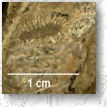
|
Back to Prem's Fossil Gallery
Trilobites
Fossil Plants
Fossil Hunting FAQ
Other Paleontology Related Links
Web page design and graphics (except for "award"
graphics) Copyright © 1995, 1996 by Prem Subrahmanyam Graphic Design. All
Rights Reserved. Images on this page may be used for personal use or for
promotion of the presence and content of this page. Images on this page may also
be used at educationally oriented sites provided proper credit is given to the
author. Neither the images nor the contents of this page may be used
commercially without the written permission of the author.








